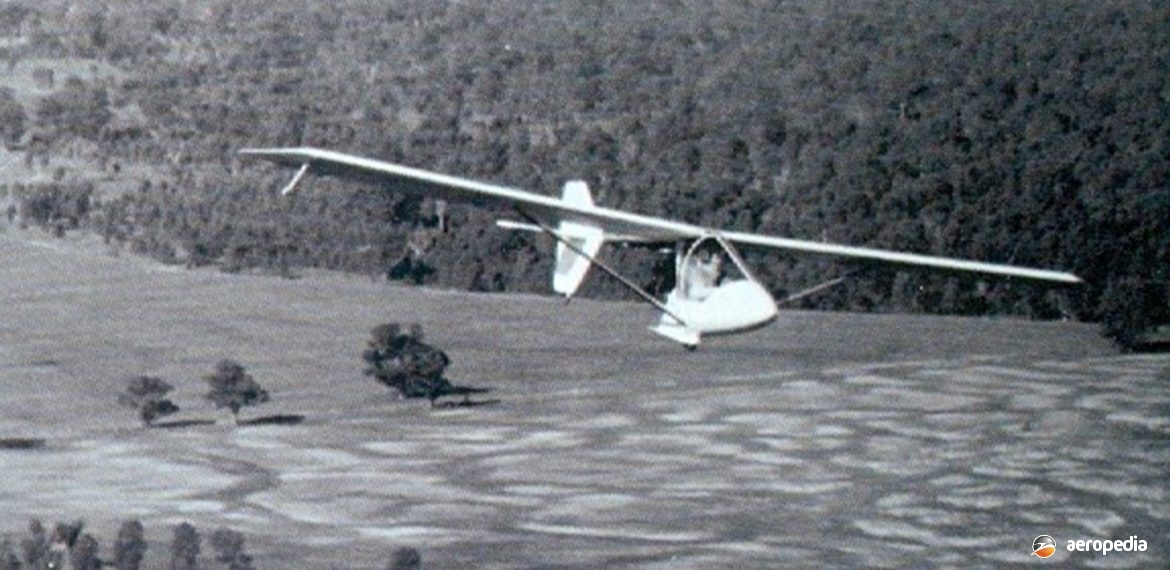Photograph:
Photograph of an early production Hitchhiker (Author’s collection)
Country of origin:
Australia
Description:
Single-seat ultralight sport aircraft
Power Plant:
One 21 kw (28 hp) Rotax 277 two-cylinder, two-stroke geared air-cooled engine
Specifications:
- Wingspan: 8.05 m (26 ft 4 in)
- Length: 4.84 m (15 ft 9 in)
- Height: 1.37 m (4 ft 6 in)
- Wing area: 9.19 m² (99 sq ft)
- Economical cruising speed: 102 km/h (63 mph)
- Stalling speed: 48 km/h (30 mph)
- Fuel capacity: 27 litres (5.9 Imp gals)
- Rate of climb: 265 m/min (870 ft/min)
- Load factors: +6 / -4 G
- Glide ratio: 9:1
- Empty weight: 100 kg (220 lb)
- Payload weight: 104 kg (230 lb)
History:
The Hitchhiker was designed, built and marketed by Robert Labahan of Seville, VIC in the mid 1980s as a single-seat, open-cockpit ultralight aircraft suitable for cross-country and short field operations. It had a rigid wooden wing which had full span flaperons, having both positive and negative settings. It was extremely light-weight and was powered by a 21 kw (28 hp) Rotax 277 engine with a geared drive. The pilot sat in a reclined position, similar to that of a glider pilot, in order to present the smallest possible frontal area. A stream-lined pod could be fitted for the colder times of the year to provide some pilot protection.
The aircraft was marketed and available in ready to fly status. Another design by Mr Labahan was the Aero Ranger. An unregistered Hitchhiker XC crashed and was destroyed on 24 June 1988 3.5 km SSE of Officer, VIC.

